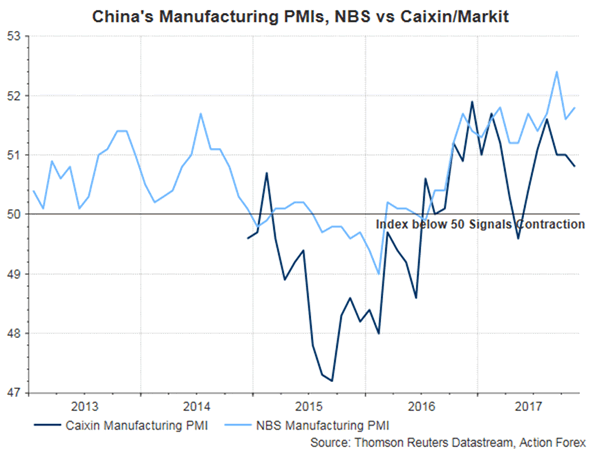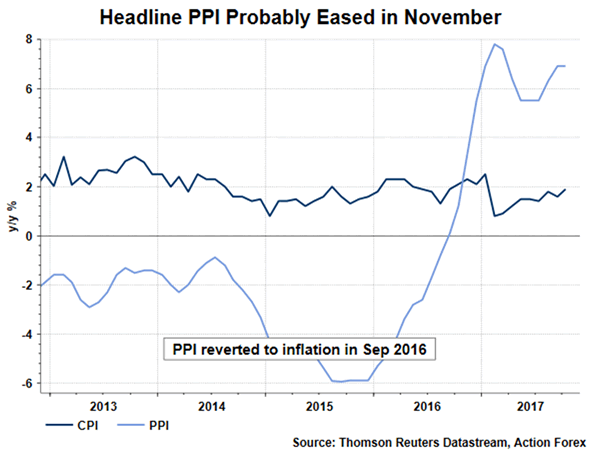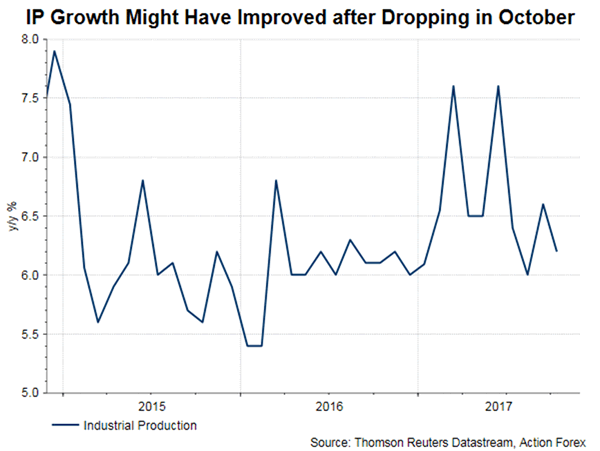The Caixin manufacturing PMI for China slipped to 50.8 in November, from 51 in October. The reading also missed expectations of 51. Looking into the details, production and new orders increased at modest rates, while purchasing costs rose sharply. However, confidence towards the business outlook dropped to joint-lowest on record. As the agency noted, the manufacturing sector remained stable for most of November, despite ‘some signs of weakness’. It forecast that the economy would remain stable for 4Q17. While growth should improve this year, when compared with 2016, it should decelerate in 2018. By contrast, the official manufacturing PMI rose +0.2 point to 51.8 in November this also beat expectations of a drop to 51.5. Non- manufacturing PMI increased +0.5 point to 54.8 last month. Divergence between official and private PMIs is nothing new. Part of the reason for the divergence is that the official data focus on large enterprises, while Caixin’s focus on SMEs. This interpretation appears contradicting this month. Indeed, the official report suggests that SME PMI improved, while that for large companies slipped -0.2 point to 52.9 in November.

Official PMIs and November Macro Data Forecasts
Take a look as the manufacturing PMI first. Its increase was mainly driven by production and new orders sub-indices which rose to 54.3 and 53.6, from 53.4 and 52.9 in October, respectively. Raw material sub-index slipped -0.2 point to 48.4 while the employment index was down, also by -0.2 point, to 48.8. Inflation pressure eased last month, as shown in the declines in input and output price sub-indices, due to high base effect. This might imply that headline PPI would also ease in November. Besides improvement in the new orders sub-index, the new export orders sub-index also rose +0.7 point to 50.8. This might suggest a pick-up in IP growth during the month


Non- manufacturing PMI, comprising of services and construction sector, increased +0.5 point to 54.8 last month. Both services and construction PMIs rose during the month. It is believe that a one-off factor, namely the ‘double-11’ festival, has helped boost the services sector (in particular retail, IT and logistic activities) performance. This might also help explain the outperformance of SMEs as many of the retail, IT and logistic activities belong to this category











